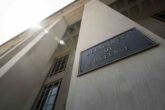January 18, 2017
McCain’s Excellent White Paper: Smaller Carriers, High-Low Weapons Mix, Frigates, Cheap Fighters
The Senate Armed Services Committee new White Paper positions the committee as a leader in the Pentagon’s effort to rebuild and reform. The SASC offers a road map with key decision destinations for the new Trump Administration to follow as it pursues its goal of strengthening the nation’s military. The document is both broad and deep in its treatment of defense issues, ranging from the need for a new national grand defense strategy to recommendations on needed investments in cyber security.
Of particular interest and importance is the SASC’s advocacy for the U.S. to buy a high-low mix of weapons systems, a concept that I have advocated for years, as a means of advancing the force technologically for the high-end fight, while also buying cheaper systems in bulk to keep the force size up while addressing day-to-day threats.
In a dramatic move, McCain’s committee recommends increasing the Navy fleet by an additional 18 ships over the 41 planned in the next five years. It would add additional submarines, destroyers, a new small surface combatant and a new, smaller, conventionally fueled aircraft carrier to the buy list. The initial plus ups are achieved by swiftly expanding production on already “warm” production lines such as the Virginia-class fast attack submarines (going from two to four per year, for instance) and the Arleigh Burke class destroyers, made by two shipbuilding companies in two yards in Maine and Mississippi.
Read the full article at Breaking Defense.
More from CNAS
-
Defense / Transatlantic Security
When Defense Becomes Destruction: Austria-Hungary’s Mistake and Ukraine’s RiskThis article was originally posted on War on the Rocks. The southeastern Polish city of Przemyśl, with its elegant 19th century Habsburg-era train station, remains one of the ...
By Franz-Stefan Gady
-
Defense / Transatlantic Security
Ukraine’s Catch-22 MomentThis article was originally published in the Financial Times. In Joseph Heller’s wartime classic, Catch-22, the protagonist Yossarian seeks out the US army surgeon Doc Daneeka...
By Franz-Stefan Gady
-
CNAS Insights | Budgetary Own Goals Undermine “Speed and Volume”
On November 7, Secretary of Defense Pete Hegseth laid out a plan to overhaul the Department of Defense’s (DOD’s) acquisition system. Placing an emphasis on delivering new capa...
By Philip Sheers, Carlton Haelig & Stacie Pettyjohn
-
Drones: Who Is Making the New Weapons of War?
From Ukraine and Russia to Gaza and Sudan, drones have become a key weapon of war. Which companies are making them, and profiting from this rapidly expanding but controversial...
By Stacie Pettyjohn




